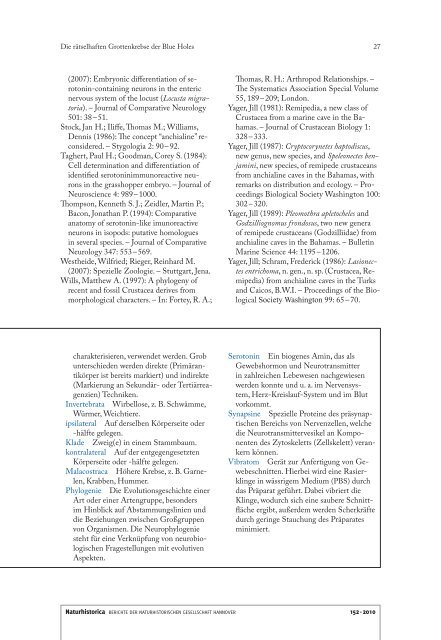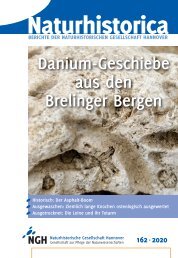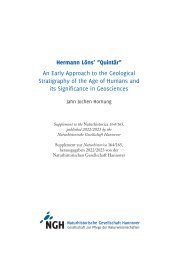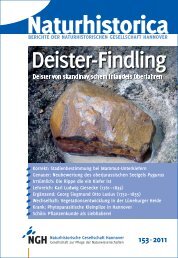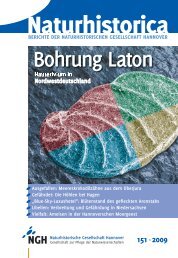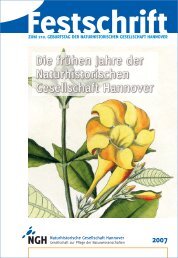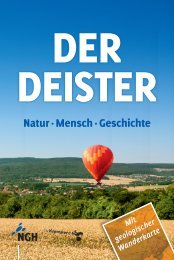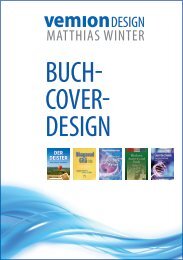Create successful ePaper yourself
Turn your PDF publications into a flip-book with our unique Google optimized e-Paper software.
Die rätselhaften Grottenkrebse der Blue Holes<br />
27<br />
(2007): Embryonic differentiation of serotonin-containing<br />
neurons in the enteric<br />
nervous system of the locust (Locusta migratoria).<br />
– Journal of Comparative Neurology<br />
501: 38 – 51.<br />
Stock, Jan H.; Iliffe, Thomas M.; Williams,<br />
Dennis (1986): The concept “anchialine” reconsidered.<br />
– Stygologia 2: 90 – 92.<br />
Taghert, Paul H.; Goodman, Corey S. (1984):<br />
Cell determination and differentiation of<br />
identified serotoninimmunoreactive neurons<br />
in the grasshopper embryo. – Journal of<br />
Neuroscience 4: 989 – 1000.<br />
Thompson, Kenneth S. J.; Zeidler, Martin P.;<br />
Bacon, Jonathan P. (1994): Comparati ve<br />
anatomy of serotonin-like imunoreactive<br />
neurons in isopods: putative homologues<br />
in several species. – Journal of Comparative<br />
Neurology 347: 553 – 569.<br />
Westheide, Wilfried; Rieger, Reinhard M.<br />
(2007): Spezielle Zoologie. – Stuttgart, Jena.<br />
Wills, Matthew A. (1997): A phylogeny of<br />
recent and fossil Crustacea derives from<br />
morphological characters. – In: Fortey, R. A.;<br />
Thomas, R. H.: Arthropod Relationships. –<br />
The Systematics Association Special Volume<br />
55, 189 – 209; London.<br />
Yager, Jill (1981): Remipedia, a new class of<br />
Crustacea from a marine cave in the Bahamas.<br />
– Journal of Crustacean Biology 1:<br />
328 – 333.<br />
Yager, Jill (1987): Cryptocorynetes haptodiscus,<br />
new genus, new species, and Speleonectes benjamini,<br />
new species, of remipede crustaceans<br />
from anchialine caves in the Bahamas, with<br />
remarks on distribution and ecology. – Proceedings<br />
Biological Society Washington 100:<br />
302 – 320.<br />
Yager, Jill (1989): Pleomothra apletocheles and<br />
Godzilliognomus frondosus, two new genera<br />
of remipede crustaceans (Godzilliidae) from<br />
anchialine caves in the Bahamas. – Bulletin<br />
Marine Science 44: 1195 – 1206.<br />
Yager, Jill; Schram, Frederick (1986): Lasionectes<br />
entrichoma, n. gen., n. sp. (Crustacea, Remipedia)<br />
from anchialine caves in the Turks<br />
and Caicos, B.W.I. – Proceedings of the Biological<br />
Society Washington 99: 65 – 70.<br />
charakterisieren, verwendet werden. Grob<br />
unterschieden werden direkte (Primärantikörper<br />
ist bereits markiert) und indirekte<br />
(Markierung an Sekundär- oder Tertiärreagenzien)<br />
Techniken.<br />
Invertebrata Wirbellose, z. B. Schwämme,<br />
Würmer, Weichtiere.<br />
ipsilateral Auf derselben Körperseite oder<br />
-hälfte gelegen.<br />
Klade Zweig(e) in einem Stammbaum.<br />
kontralateral Auf der entgegengesetzten<br />
Körperseite oder -hälfte gelegen.<br />
Malacostraca Höhere Krebse, z. B. Garnelen,<br />
Krabben, Hummer.<br />
Phylogenie Die Evolutionsgeschichte einer<br />
Art oder einer Artengruppe, besonders<br />
im Hinblick auf Abstammungslinien und<br />
die Beziehungen zwischen Großgruppen<br />
von Organismen. Die Neurophylogenie<br />
steht für eine Verknüpfung von neurobiologischen<br />
Fragestellungen mit evolutiven<br />
Aspekten.<br />
Serotonin Ein biogenes Amin, das als<br />
Gewebshormon und Neurotransmitter<br />
in zahlreichen Lebewesen nachgewiesen<br />
werden konnte und u. a. im Nervensystem,<br />
Herz-Kreislauf-System und im Blut<br />
vorkommt.<br />
Synapsine Spezielle Proteine des präsynaptischen<br />
Bereichs von Nervenzellen, welche<br />
die Neurotransmittervesikel an Komponenten<br />
des Zytoskeletts (Zellskelett) verankern<br />
können.<br />
Vibratom Gerät zur Anfertigung von Gewebeschnitten.<br />
Hierbei wird eine Rasierklinge<br />
in wässrigem Medium (PBS) durch<br />
das Präparat geführt. Dabei vibriert die<br />
Klinge, wodurch sich eine saubere Schnittfläche<br />
ergibt, außerdem werden Scherkräfte<br />
durch geringe Stauchung des Präparates<br />
minimiert.<br />
<strong>Naturhistorica</strong> Berichte der Naturhistorischen Gesellschaft Hannover <strong>152</strong> · 2010


